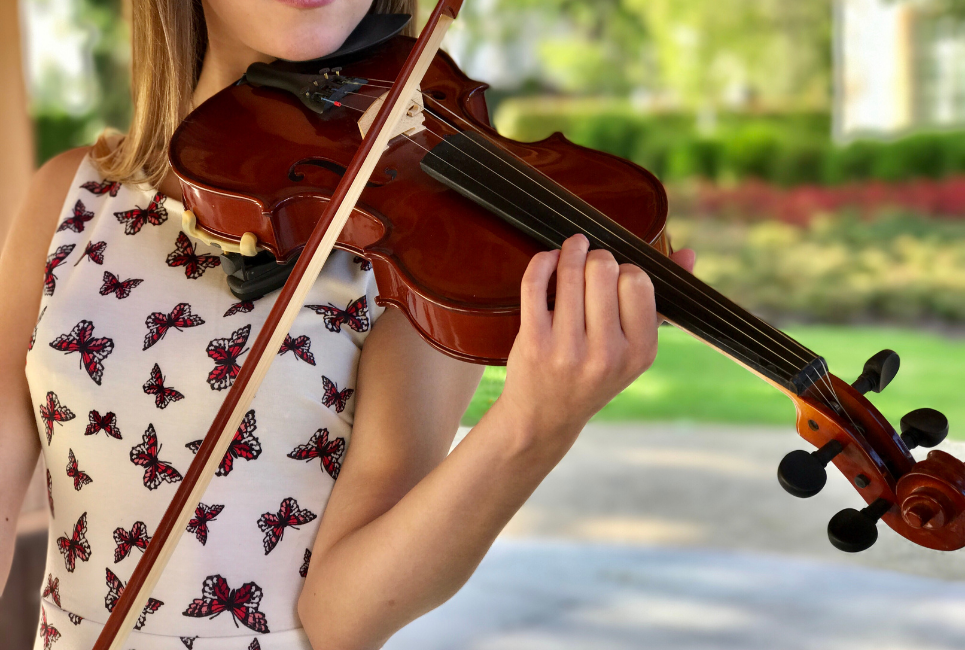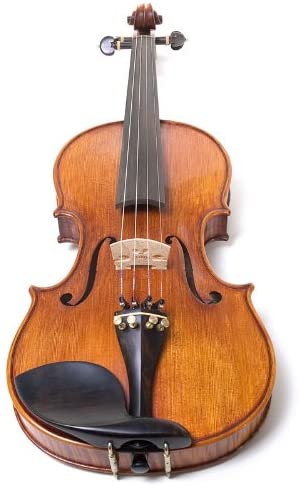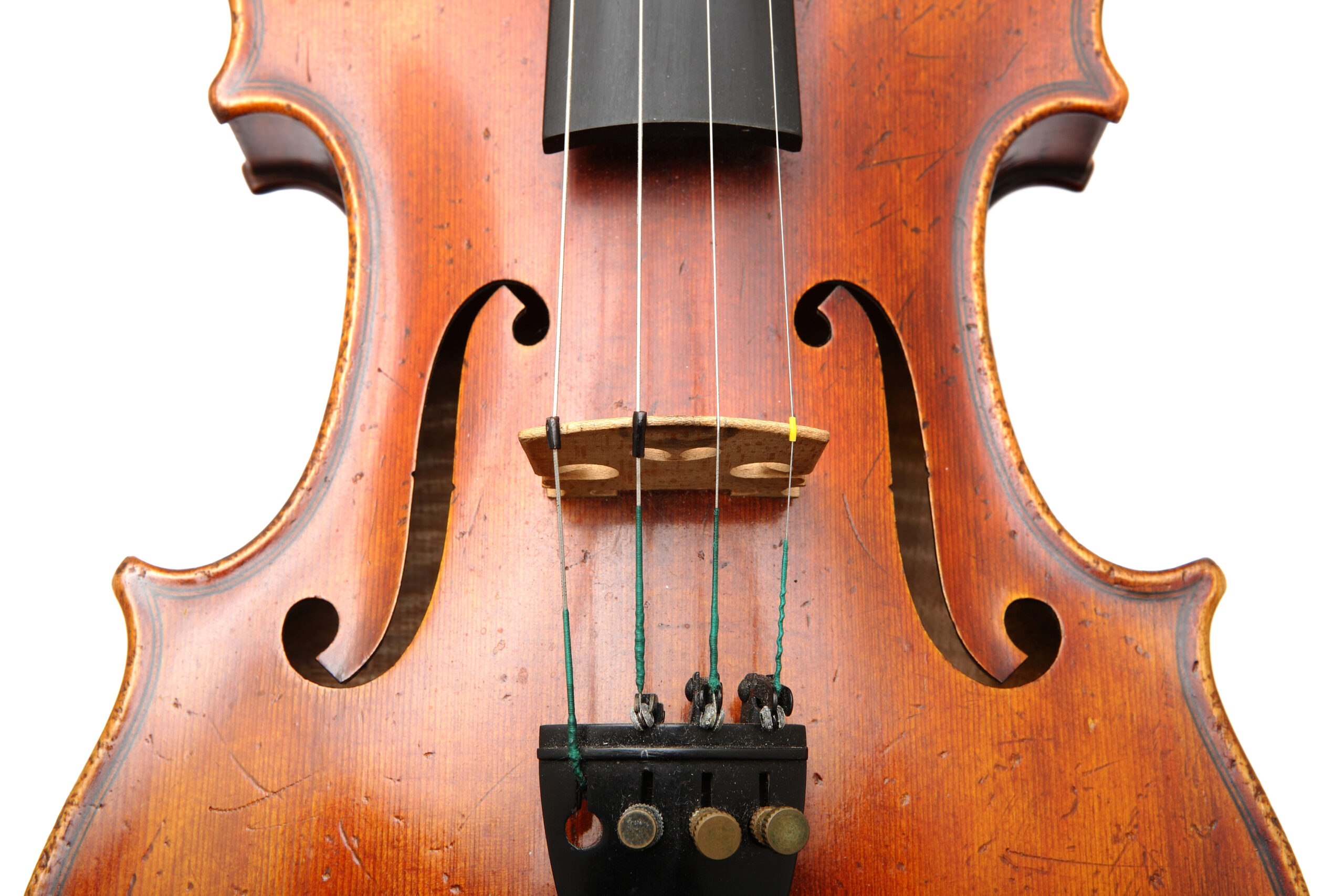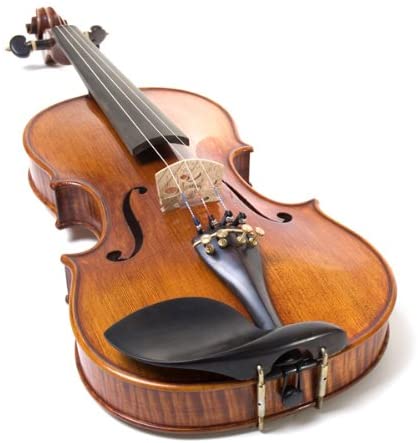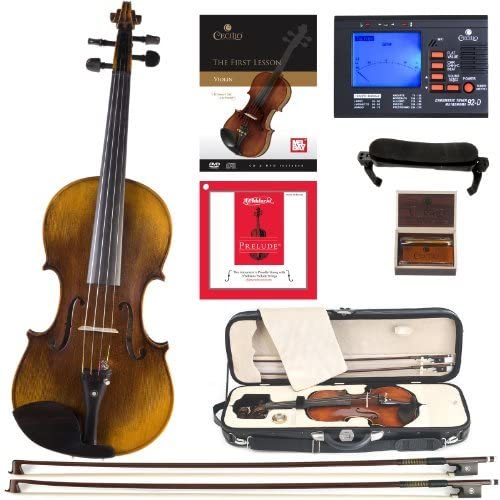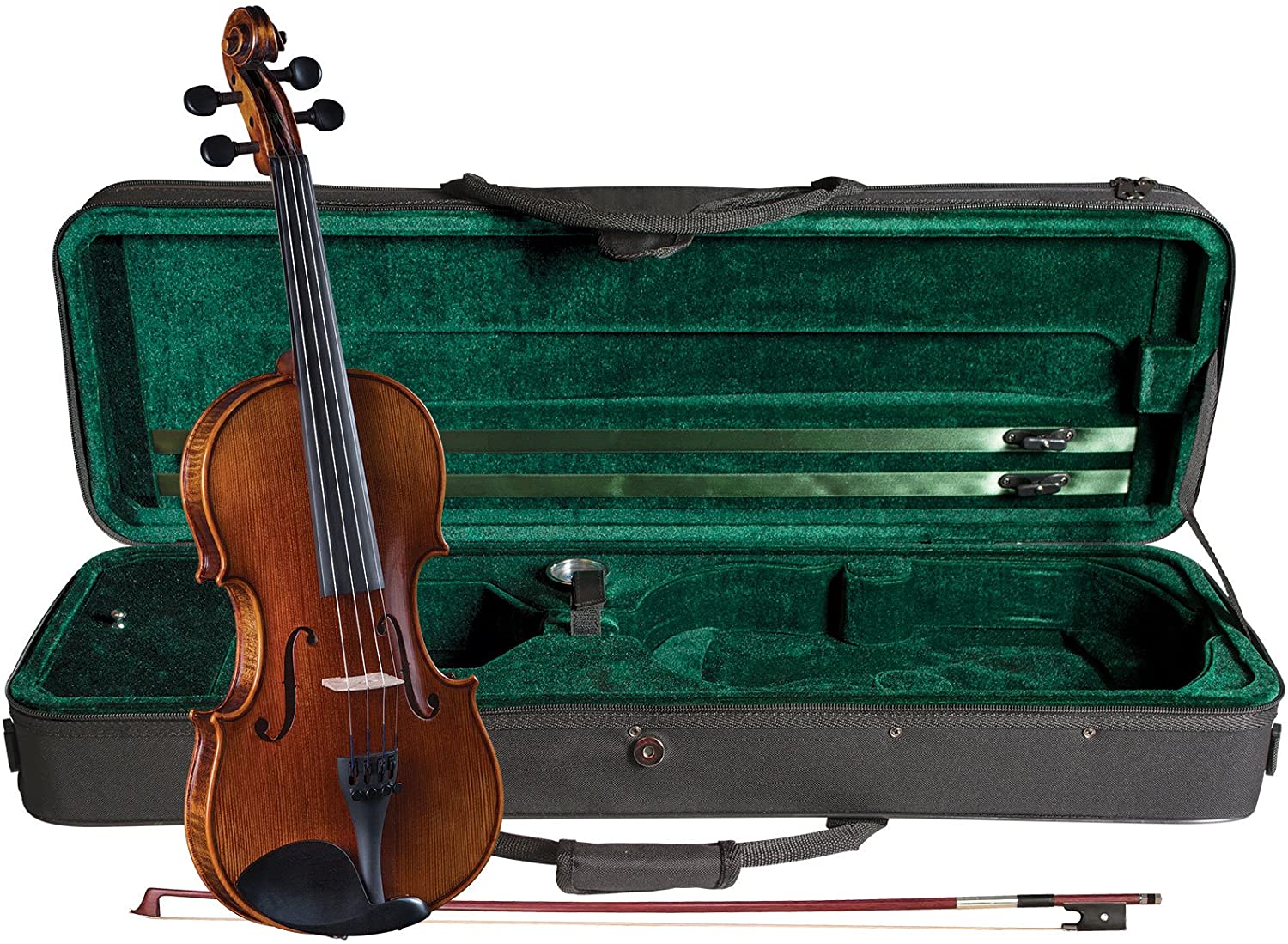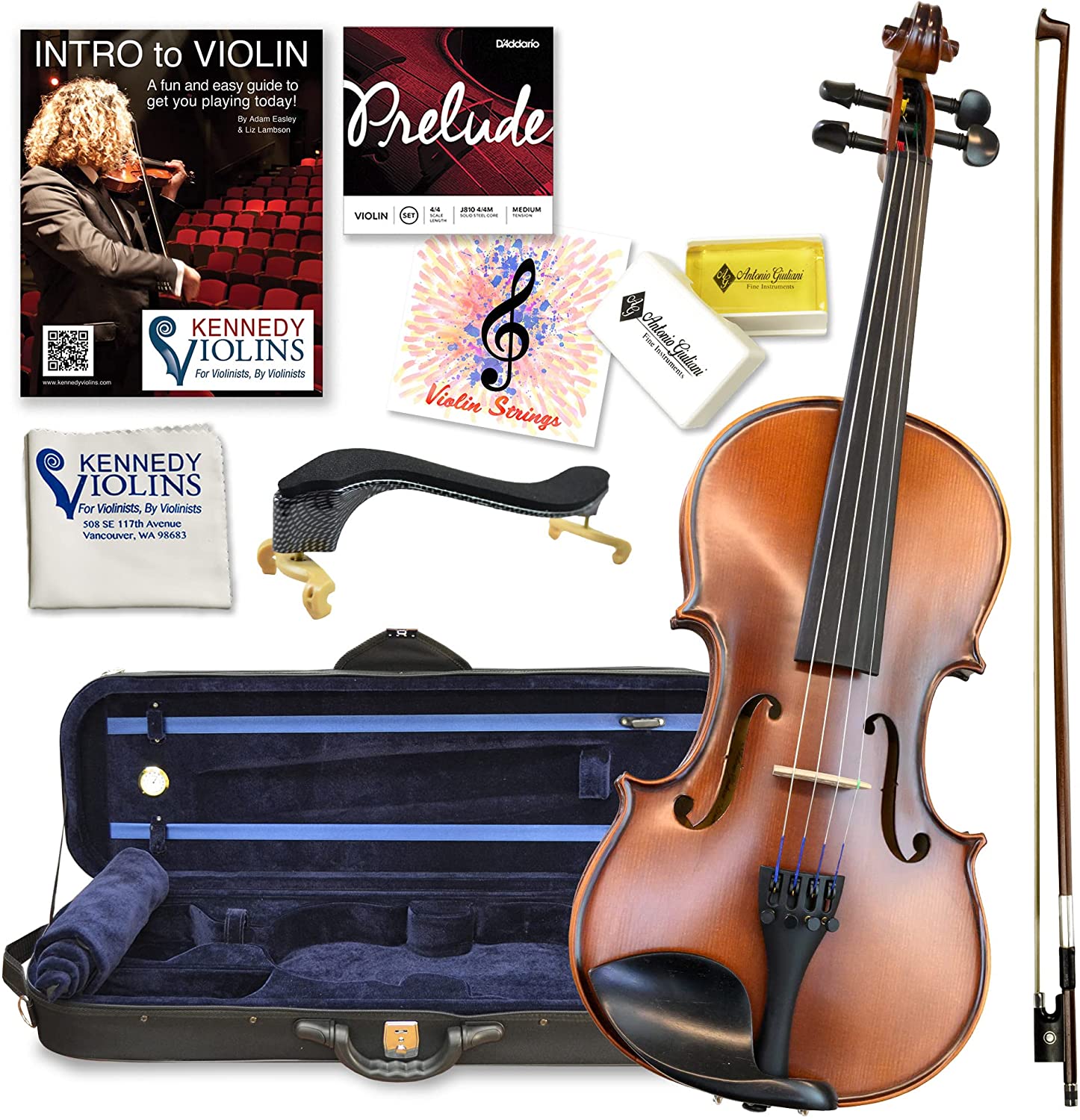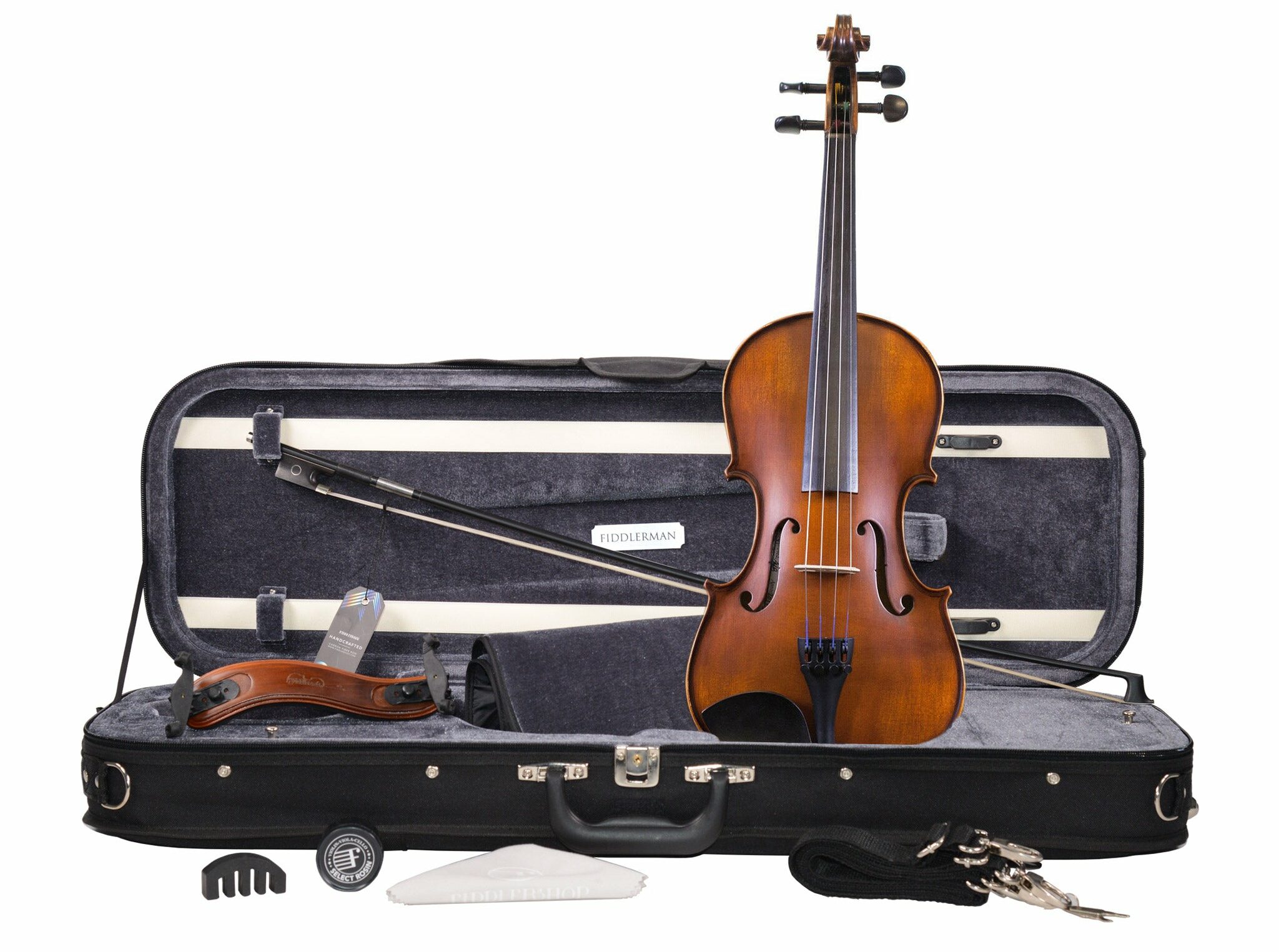- Mendini MV300: An Honest Breakdown and Review - April 6, 2022
- Cecilio Viola Review and Guide: 3 Violas, Which is the Best? - January 21, 2022
- Cecilio Electric Violin Review and Guide: A Silent Practice Violin! - January 20, 2022
Cecilio has become known for its inexpensive and often poor-quality student instrument. While their lower-level violins leave quite a bit to be desired, how does their intermediate violin compare? Will it take a student to the top of their class or leave them in the dust? Let’s find out!
Pros, Cons, and Bottomline
This is a quality violin, but my overall opinion is pretty neutral. It’s not my first choice in Cecilio’s lineup or in general, but I also don’t hate it at all. It sounds pretty good out of the case, and it would sound much better with some adjustments. It’s also made of quality tonewoods and has overall pretty good construction. Still, it just doesn’t catch my eye both tonally and visually.
Newer students or those with a lower-end Cecilio violin would enjoy this violin. It will give new students a leg up instrument-wise and allow them to grow with their violin longer. It may even allow them to progress faster because it will be easier to draw the sound out of. For those wanting an intermediate violin, then you can find better for less, even within Cecilio’s lineup. However, if you enjoy this violin’s sound, how it looks, and the price is right for you, then it’s a great choice!
Overall this isn’t my first choice for intermediate violins. Still, it’s an excellent choice for those wanting a very bright violin!
Pros
- Solid spruce and maple tonewoods
- Tonewoods aged seven years
- One-piece flamed maple back
- Quality upgraded case
- Ebony fittings with white detail
Cons
- Red label strings
- Extremely bright tonally
- Muddy lower register
- Poor quality accessories
- Semi sprayed varnish
Intermediate Violins
As a student grows in their skills, they will find themselves outgrowing their beginner instrument. This is where intermediate violins come in. Cheaper than a professional violin, they allow a student to grow their skills and typically make it to the top of any music program. The difference between a student violin and an intermediate one is the tonewoods used and their age.
Tonewoods are one of the most important aspects of a violin, and it’s the main thing that gives it its personality and sounds. Quality tonewoods allow a violin to grow and become sophisticated and mature sounding. Tonewoods harvested from high altitudes in Europe or the US are considered the best. The best tonewoods are found in Italy, where Stradivari sourced his wood. Aged tonewoods give a violin a headstart tonally and sound more mature quicker.
I want the tonewoods to be aged at least five years for a violin of this level. Additionally, I want them to be hand-carved. The finish would preferably be hand oil rubbed or varnished. Varnish can affect the violin’s tone, and a hand-applied varnish will ensure that it is even. Machine varnish may not spray evenly. The fingerboard should, of course, be ebony and planed correctly. The fittings may vary; I usually see ebony fittings on both student and intermediate violins.
Similar to student violins, intermediate violins often come in an outfit with accessories. These outfits don’t usually come with as many accessories as student ones. For example, my student violin came with everything, including a shoulder rest, a music book, and extra strings. My intermediate violin came with an upgraded case, carbon fiber bow, and rosin. The assumption is that an intermediate player will have many of the accessories they include. I did find the accessories with my intermediate violin to be of much higher quality than my student violin to match the price difference.
Does the CVN 700 Hold Up?
Spec-wise the CVN 700 is an excellent quality violin. Still, it definitely has a few downsides for the price point and what Cecilio offers in their other intermediate-level violins. The tonewoods are solid hand-carved spruce and maple. The back of this violin is made with one piece of highly flamed wood instead of two like normal. This doesn’t contribute anything tonally, but I really enjoy the cohesive look. The tonewoods have been aged for at least seven years which is a nice feature. There is no mention of where Cecilio sources their wood; it’s pretty safe to say it’s in China where these instruments are manufactured. This is standard for student instruments, but I like to see European tonewoods on intermediate-level instruments.
The varnish is semi-hand rubbed and has an antique reddish finish. I’m not sure how much of this instrument was hand varnished, but that is a downside to me as it increases the likelihood of an uneven varnish. Especially when the CVN 600 comes fully hand rubbed for less money.
The fingerboard is pure ebony, as are all of the fittings. The violin is pictured with four fine tuners, but I only saw one on the E string of the violins. For an intermediate student, this is fine, as you will be tuning with pegs. Having three finer tuners put on during setup will be a great idea for new students. The violin is strung with Red Label Sensitive strings, which contributes to this violin’s overly bright tone. I recommend switching to different strings. I will cover this a bit more in-depth in the next section.
The outfit for this violin includes a deluxe hard case with quite a bit of space and a built-in hydrometer. There’s even a small pocket for just your shoulder rest which I love. The interior is soft velvet, and there are two basic bow holders. The bows included are your basic brazilwood bows, which require a replacement. Cecilio bows are known for warping or being uneven. It’s best to not even attempt to play with them, throw them out or give them to the cat. Totally up to you! I recommend upgrading to a carbon fiber bow; Cadenza, Fiddlershop, or Glasser are all great picks!
The rest of the outfit includes a shoulder rest, tuner, rosin, a book, and an extra set of strings. These things will do the job, but you can replace them if you don’t already have a preference. I like Kun’s shoulder rests a lot, and I’ve had Fiddlershop shoulder rests. The strings are another accessory that can go in the trash. Their in-house brand sounds terrible and is prone to breaking. Lastly, the rosin is decent, but upgrading can improve the sound. Piastro Gold Flex is a popular choice, and I really like Magic Rosin. Overall, this outfit includes many accessories for an intermediate violin, which is excellent for a new student choosing a better instrument. If you have been playing for a while, some of the extras are nice to have floating around. You never know when your favorite rosin will break beyond repair.
How does it sound?
The CVN 700 features a nice bright upper register. I really love how much it sings. The lower register is muddy and lacks that pizzazz out of the case. Still, I can hear the violin’s promise, and I think this violin will reveal a beautiful lower register with some adjustments. First, a complete setup is required for these violins; Cecilio largely ships them with the bridge entirely down. This can cause the soundpost to shift and requires and adjustment. A luthier will set up the bridge and make any other adjustments.
Secondly, switch out the strings. The included strings hinder this violins capabilities and tone. Dominants are the standard student strings and should make the lower register much clearer. Higher-end strings like Obligatos, Evah Pirazzi, and Helicores are other great choices that could massively improve the overall tone of this violin. A luthier will be able to help you choose a string set that fits your violin.
Lastly, give this violin time to warm and come into its personality. As the wood ages and shifts, the tone will open up. Within six months, this violin should be sounding much better. Within a year, I could be happy with the sound. The violin will get better with age, much like fine wine.
Violins that Do Catch My eye
While this violin might not strike my fancy, quite a few out there do for similar price points. These violins are made from quality materials and by companies that I trust.
Cecilio CVN 600
My top choice is the Cecilio CVN 600. It is a quality violin for about a hundred dollars less. The features of this violin are nearly identical, except the CVN 600 comes with fully hand oil rubbed varnish and D’Addario prelude strings which are standard student strings. The fittings are also slightly different but still pure ebony. I like the fittings as they are classy with their inlaid pearl detailing. I prefer the sound of this violin as well. It’s very mellow, and the G string doesn’t sound nearly as muddy. The strings are also standard and sound better, which means you won’t have to purchase new strings right away, but you can if you want. The rest of the accessories are the exact same as well. For less money, you can get an instrument that is technically better quality and, in my opinion, sounds better right away as well.
Cremona SV-500 Premier
Next up would be the Cremona SV-500 Premier violin. This is a great new or step-up instrument that will please a growing student for a long time. Featured in Strings Magazine, this violin has a well-rounded sound. The upper register is neither overly bright nor dark, and the same can be said for the G string. Both registers are very clear and lend themselves well to different playing styles. The tonewoods are hand-carved solid spruce top and highly flamed maple back with a hand-applied varnish. It is strung with Prelude strings and uses a French Aubert bridge. The fittings are swiss-style ebony fittings, and the outfit comes with a chinrest, case, and bow.
Antonio Giuliani Etude Violin
The Antonio Giuliani Etude Violin from Kennedy Violins is an excellent quality violin made with cool materials. This violin features hand-carved dried maple and spruce from the Himalayan mountains. This violin is handmade and fully set up in the United States. It comes ready to play out of the case! The fittings and fingerboard are pure ebony, and the bridge has been custom-made for the violin. This violin has a great clear lower register and a nice bright upper register. It’s a little too bright for me, but overall it sounds fantastic for the price. The violin comes with D’Addario prelude strings, a nice upgraded case, a Guiliani brazilwood bow, rosin, lesson book, shoulder rest, extra strings, and a cleaning cloth. You get a lot of bang for your buck with this violin outfit, and it will continue to grow with you over time!
Fiddlershop OB1 Violin
The Fiddlershop OB1 Violin outfit is a quality student to intermediate violin outfit. Created by professional musicians and backed by their lifetime guarantee, you can’t go wrong with any of their products. This violin features solid carved spruce and maple tonewoods with wood dried a minimum of 4 years. The fingerboard and fittings are made from pure ebony. The bridge is a French Despiau or Holestin 1 Star, and the soundpost is made from European spruce. The strings are either Prelude or Fiddlerman strings. The outfit comes with a carbon fiber bow, shoulder rest, high-quality case, rosin, practice mute, polishing cloth, and rosin. The violin sounds pretty even. It’s a bit bright on the upper register. Still, it’s enjoyable, and the lower register is very clear, although it doesn’t really have its own personality. Overall this is a great instrument for the price, and it comes with great accessories!
FAQ
Answer: The violin is considered one of the most challenging instruments because it relies heavily on your ear and the ability to hear intonation changes. Unlike many instruments, the orchestral string family doesn’t have any frets, keys, or guides for your fingers. Forcing you to train your ear heavily from the start and relying on muscle memory as you advance in skills. Most students put finger guides on their violin for the first couple of months. Still, it can become easy to rely on those aides instead of training your ear to hear the differences.
Answer: The violin strings are attached at the bottom of the instrument by the tailpiece. You put the metal ball on the end through the hole on the tailpiece or the fine tuner. At the top of the violin, the pegs hold the strings tight. You thread the end through each peg and wind them until they are in tune.
Answer: Some are, but most aren’t. It’s best to not leave your instrument in bad weather and keep it inside. Please don’t leave your violin in the car. The temperature and humidity changes can cause extensive damage to wood, even cracking.
Answer: Ray Chen plays a 1715 Stradivarius violin that he is borrowing from the Nippon Music Foundation. This violin was once owned by Joseph Joachim, a famous Hungarian violinist.
Final Thoughts
The CVN 700 is a good quality instrument, but it doesn’t compare tonally and price-wise to its cheaper counterpart, the CVN 600. The upper register is just far too bright for my liking, but this is a great pick for those who like bright violins. Changing the strings will give it a big boost tonally, along with just getting to know your new friend.
Looking for more interesting readings? Check out:

